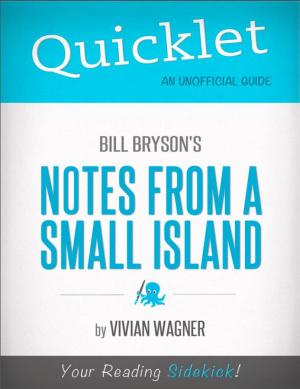| Author: | Cara Batema | ISBN: | 9781614648734 |
| Publisher: | Hyperink | Publication: | February 29, 2012 |
| Imprint: | Hyperink | Language: | English |
| Author: | Cara Batema |
| ISBN: | 9781614648734 |
| Publisher: | Hyperink |
| Publication: | February 29, 2012 |
| Imprint: | Hyperink |
| Language: | English |
ABOUT THE BOOK
The story of IPA beer starts, as most tales of good beer usually do, in a British pub. The term “India Pale Ale” is a bit misleading because the beer is not brewed in India, but rather originates in Britain previously destined for the Indian marketplace. IPA beers originated as “October ales,” named so because they were typically brewed during that month to accompany British sailors on their trips to the East Indies. The long journey proved problematic for darker beers; although often preferred by the British public, these beers would spoil by the end of the journey. The creation of the IPA solved the challenges of traveling for months by boat through extreme temperatures.
IPAs in particular incorporate more hops, which contribute to the bitter, flowery, or citrusy flavors. The term “hops” refers to the flower of a particular vine, a quintessential aspect of beer-making. Historically, the production of IPA used hops to help stabilize beer on its journey to the Indies. Hops act as a natural preservative, so the beer would travel better with more hops during the days before modern refrigeration techniques. IPAs eventually gained popularity in Britain and other parts of the world (the American Pale Ale is a variation using American hops) as brewers served the beer in pubs, and consumers began to like and even prefer the flavor.
MEET THE AUTHOR
Cara Batema holds a Bachelor's degree in music and creative writing. Cara composes scores and performs for films in addition to writing and editing children's novels and other publications. Cara loves food, wine, fashion, bike riding, and other general artsy diversions. Subscribe to Cara's Los Angeles Coffee Examiner page or follow on Twitter @indiesmitty.
EXCERPT FROM THE BOOK
Try contrasting or complementing flavors. For example, couple a spicy pale ale with a spicy Thai or Indian dish. The spice and robustness of the beer works well with the bite of the food. On the flipside, pick a dry, bitter IPA to work with sweet fish like oysters.
If you are into wine, think about lagers as white wine and ales as red wine. The heavy hops in the IPA act like acidity in wine, so an IPA might be more akin to a Zinfandel or Chianti. Most IPAs have medium body, so they work well in many dishes, but nothing too heavy or too light. In general, pair lighter beers with lighter food and heavy beers with heavier food. Try an IPA with rich vegetables like avocados, onion, or mushrooms. Beef and chicken, especially those with a little spice to them, also fare well with IPAs. At the end of the day, if you enjoy a good IPA, you will like it with almost any dish...
Buy a copy to keep reading!
ABOUT THE BOOK
The story of IPA beer starts, as most tales of good beer usually do, in a British pub. The term “India Pale Ale” is a bit misleading because the beer is not brewed in India, but rather originates in Britain previously destined for the Indian marketplace. IPA beers originated as “October ales,” named so because they were typically brewed during that month to accompany British sailors on their trips to the East Indies. The long journey proved problematic for darker beers; although often preferred by the British public, these beers would spoil by the end of the journey. The creation of the IPA solved the challenges of traveling for months by boat through extreme temperatures.
IPAs in particular incorporate more hops, which contribute to the bitter, flowery, or citrusy flavors. The term “hops” refers to the flower of a particular vine, a quintessential aspect of beer-making. Historically, the production of IPA used hops to help stabilize beer on its journey to the Indies. Hops act as a natural preservative, so the beer would travel better with more hops during the days before modern refrigeration techniques. IPAs eventually gained popularity in Britain and other parts of the world (the American Pale Ale is a variation using American hops) as brewers served the beer in pubs, and consumers began to like and even prefer the flavor.
MEET THE AUTHOR
Cara Batema holds a Bachelor's degree in music and creative writing. Cara composes scores and performs for films in addition to writing and editing children's novels and other publications. Cara loves food, wine, fashion, bike riding, and other general artsy diversions. Subscribe to Cara's Los Angeles Coffee Examiner page or follow on Twitter @indiesmitty.
EXCERPT FROM THE BOOK
Try contrasting or complementing flavors. For example, couple a spicy pale ale with a spicy Thai or Indian dish. The spice and robustness of the beer works well with the bite of the food. On the flipside, pick a dry, bitter IPA to work with sweet fish like oysters.
If you are into wine, think about lagers as white wine and ales as red wine. The heavy hops in the IPA act like acidity in wine, so an IPA might be more akin to a Zinfandel or Chianti. Most IPAs have medium body, so they work well in many dishes, but nothing too heavy or too light. In general, pair lighter beers with lighter food and heavy beers with heavier food. Try an IPA with rich vegetables like avocados, onion, or mushrooms. Beef and chicken, especially those with a little spice to them, also fare well with IPAs. At the end of the day, if you enjoy a good IPA, you will like it with almost any dish...
Buy a copy to keep reading!















